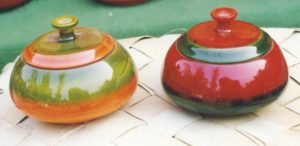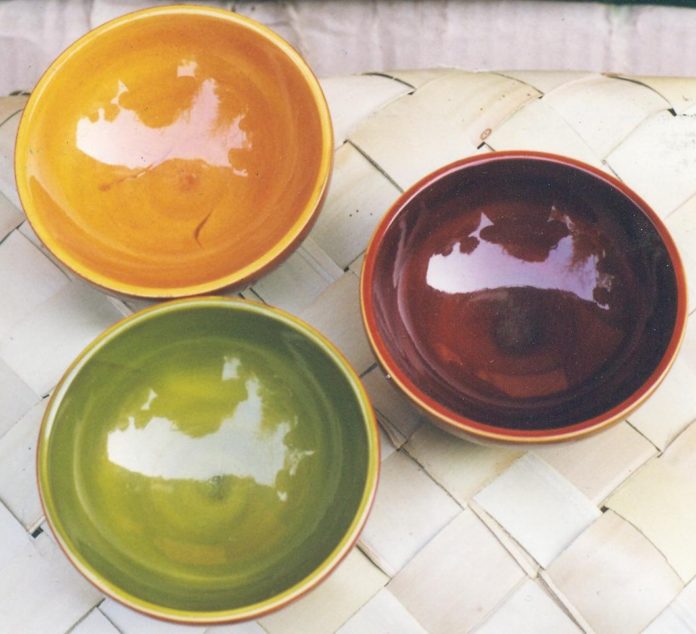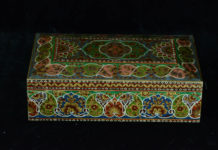The small village of Etikoppaka in Andhra Pradesh has been known for its coloured lac coated turned wood objects for over two centuries. In the past, craftspersons made objects for domestic and ritual use, fulfilling orders from distant temple towns from as far as Tamil Nadu to Odisha. Figures of gods and goddesses, miniature temple chariots, architectural carvings, boxes, and decorative elements were carved from the ivory colored ankudu tree (Wrightia tinctoria) sourced from nearby forests. The families keeping the lac making and coating process a closely guarded secret. However, in the 1950s, a combination of declining patronage, deteriorating quality and the replacement of natural dyes with harsh chemical colors, led to a shrinking of demand and a precipitous decline in the craft practise from over 250 families to just a handful.
 About two decades ago the craft form was revived by C. V. Raju, a member of a local landowning family and himself a craftsperson. With an emphasis on design, a recovery of natural dyes and improved process efficiencies, the local craft was revived. The soft absorbent ivory Arakadu wood continues to be used. The lac resin earlier sourced from the secretions of lac-insects collected from the forests has now been replaced by synthetic lacquer coloured with natural non-toxic dyes. The tools continue to be basic, and consist of a planer, saw, cutting tools and hand drills. With the wood turned on a mechanical lathe for the shaping the turn generates heat that melts the lac stick as it is pressed on the wood for an even coat. The products are given a high gloss shine finish by rubbing them with mogali reku, the leaf of the fragrant screw-pine. Over 200 families have returned to lac making. They adorn a growing range of decorative and utilitarian objects, including candle stands, boxes, frames and tableware.
About two decades ago the craft form was revived by C. V. Raju, a member of a local landowning family and himself a craftsperson. With an emphasis on design, a recovery of natural dyes and improved process efficiencies, the local craft was revived. The soft absorbent ivory Arakadu wood continues to be used. The lac resin earlier sourced from the secretions of lac-insects collected from the forests has now been replaced by synthetic lacquer coloured with natural non-toxic dyes. The tools continue to be basic, and consist of a planer, saw, cutting tools and hand drills. With the wood turned on a mechanical lathe for the shaping the turn generates heat that melts the lac stick as it is pressed on the wood for an even coat. The products are given a high gloss shine finish by rubbing them with mogali reku, the leaf of the fragrant screw-pine. Over 200 families have returned to lac making. They adorn a growing range of decorative and utilitarian objects, including candle stands, boxes, frames and tableware.





